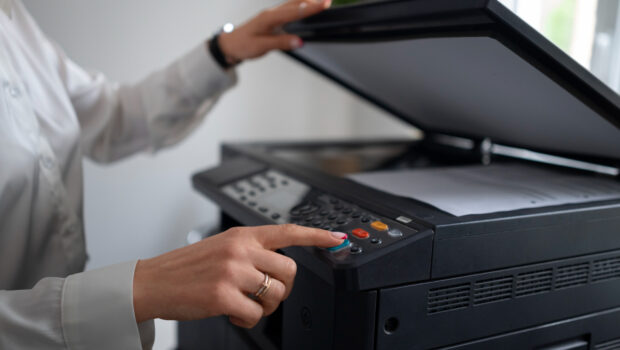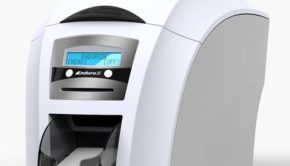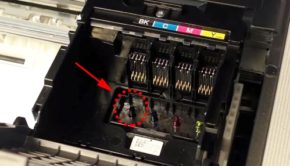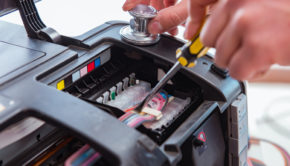What is the Difference Between a Duplicator and a Copier Machine?
A few key factors must be considered when determining what type of machine is best for your in-plant. The first is the product mix and business focus of your in-plant.
For example, color copiers provide superior quality with inline finishing options, while digital duplicators offer low costs and high speeds for large volumes of printing.
What is a duplicator?
A duplicator machine is a type of printer that can print multiple copies at once. It is an important piece of equipment for any business that needs to make large numbers of documents quickly and easily. When choosing a duplicator, there are several factors that need to be considered. These factors include the size of paper that can be copied, the number of copies per minute that the machine can produce, and whether or not it prints in color.
The number of copies that need to be made on a regular basis should also be taken into consideration. This will help determine the size of the needed copy machine. The larger the machine, the more features that will be available. These features can include a document processor, the ability to collate copies, and the option to scan and save documents to a computer file.
In addition, a copier machine can typically print in both black and white. This is an important factor to consider as it may be more cost-effective to purchase a black-and-white machine rather than a color one.
A duplicator uses a master stencil and ink to create a duplicate copy. This process is different from a copy machine, which uses a light-sensitive photoreceptor and an electrically charged printer drum that attracts powdered toner onto the paper.
While both machines are capable of producing multiple copies, a duplicator can do it more quickly than a copy machine. This is due to the fact that a duplicator does not need to scan an original document before making each copy.
The images produced by a duplicator can fade with time, which is a major issue for those who are responsible for archiving documents. This is also a problem for the mimeograph machine, another competing technology that evolved in parallel to the spirit duplicator during the second phase of the Industrial Revolution near the end of the 19th century.
In addition, digital duplicators are more expensive than copiers because the cost of the master is divided among all of the copies produced. However, the high production capacity of a duplicator can offset these higher costs.
How do duplicators work?
Duplicators can print large quantities of documents, handouts, posters, and flyers in a relatively short time. They also offer the ability to print in a wide variety of paper sizes. This makes them an ideal choice for businesses with high-volume printing needs. In addition, duplicators can be used to produce black-and-white or color copies.
Unlike photocopiers, which make digital copies using an image sensor and drum, duplicators use an inked-up print cylinder to produce images on paper. This process is faster and results in higher print speeds than copiers. Additionally, duplicators can usually handle larger print volumes than copy machines and have fewer moving parts, which makes them less prone to paper jams.
The original spirit duplicator, invented in 1923 and sold by Ditto, was an electrical device that used two-ply “spirit masters”. The first sheet could be typed, drawn, or written upon, while the second sheet was coated with colored wax. The pressure of writing or typing transferred the colored wax to the back side of the second sheet, creating a mirror image and acting like a reverse carbon paper. This was then fastened to a drum containing ink and a blank sheet of paper. The inked-up cylinder then pressed the paper against the waxed master, producing a print.
Another type of duplicator, a mimeograph machine, works by stenciling the master image onto sheets of paper. A stencil consisting of a coated fiber sheet is fastened to the ink-saturated surface of a spinning drum. The mimeograph is then operated with a set of keys that cuts the coating and exposes the fiber base, through which ink passes to create the stenciled image on each sheet of paper fed under the cylinder.
While a Copier offers several advantages over a Duplicator in terms of stock versatility, duplicators have the advantage of being able to print high volumes at a low cost. The initial cost of creating the master is higher than with a Copier, but after that, a Duplicator can produce copies for as little as one-third of a cent per copy.
What are the advantages of duplicators?
Copying remains one of the most crucial operations within many establishments. Spreading information quickly and efficiently is vital, especially in the workplace. Duplicators are the perfect machines for this task. But how do they differ from copiers, and what are their unique advantages?
Digital Duplicators are capable of printing onto a variety of paper stocks, including carbonless forms (NCR), envelopes of virtually any size, and file folders. They can also print in practically any color you like. As such, they offer a level of versatility that other multifunctional printers just cannot match.
As a general rule, digital duplicators are more cost-effective than copiers. This is because the cost of creating a master is spread over all of the copies or prints of that document. In contrast, a copier costs the same amount every time you produce a copy. This makes the machine less cost-effective for higher volumes of print jobs.
Another key advantage of a digital duplicator is its speed. A good quality machine will be able to print up to 135 A4 pages per minute and 120 A3 pages per minute. This is significantly faster than a typical office copier.
In addition to this, a digital duplicator will not produce smudged documents like you might get from a conventional toner-based copier. This is because the ink used in a digital duplicator dries on contact and does not require heat to adhere it to the paper.
Finally, a digital duplicator can print a wide range of colors – from simple black and white up to full process color. This is a major selling point for businesses that need to produce complex reports or promotional materials.
Overall, a digital duplicator is a good choice for most businesses that need to make high volumes of copies and print quickly. It is particularly useful for those who need to produce large amounts of flyers or single-page newsletters, as the machine can print at a very fast pace and at a low cost. Unlike the old-fashioned spirit duplicators of the past, modern digital duplicators are quiet and clean and use far less energy than a regular copier.
What are the disadvantages of duplicators?
Although duplicators are a great way to make multiple copies of documents and images, there are some disadvantages to using this type of equipment. The main drawback of a duplicator is the cost. Since it uses ink rather than toner, the initial costs of buying the duplicator are more expensive than a copier machine. However, once you get past the initial start-up costs, a duplicator is actually more cost-efficient than a copy machine.
This is due to the fact that duplicators use gel ink instead of powdered toner, which means that they don’t require heat to apply to paper. As a result, they are able to print faster than copiers. Additionally, they also don’t produce any toxic toner dust that is harmful to your health.
A duplicator is also a better choice for high-volume printing jobs. This is because it can easily print up to 5,000 copies at a time. In addition, duplicators can be used to print on a wide variety of paper stocks, including NCR, heavy card stock, and envelopes. This versatility makes duplicators ideal for many different types of applications.
Another advantage of duplicators is that they are very easy to use. This is because they only require the user to insert the original document into a tray and select the number of copies that they want to be made. Once the copies are finished, the document can be removed from the tray and stored for later use. Additionally, duplicators can be programmed to automatically stop making copies once the required amount has been printed.
Duplicators are also a good choice for large print jobs because they can handle high volumes of work. This is because they are able to print more copies per minute than copiers, which are limited by the capacity of their printer drums. In addition, duplicators do not use heat, allowing them to print faster than copiers and avoid issues with paper jams.
One of the most important things to remember when choosing a duplicator is that it is essential to choose one compatible with your business’s needs. This will ensure that you have the right equipment for your needs and that you are not paying for machinery that will go unused.
Cover Image by Freepik
















